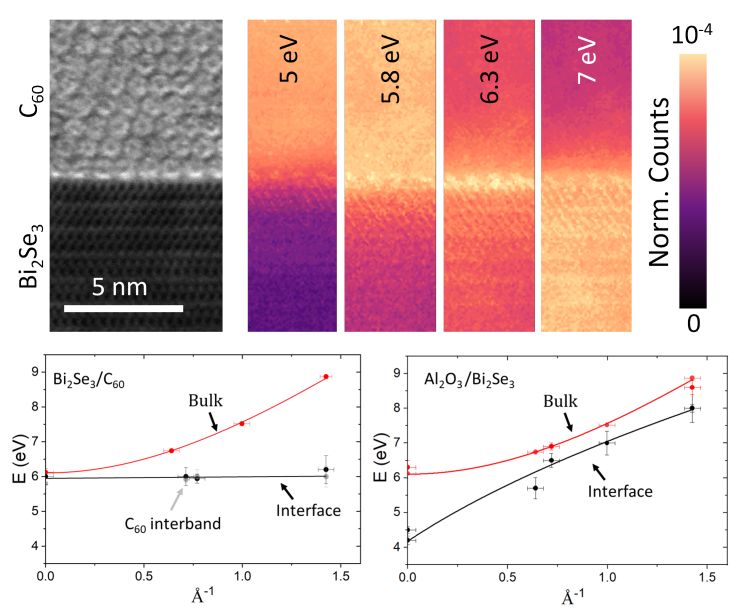Leeds scientists capture some of the world’s sharpest images of quantum materials

Researchers at Leeds have captured some of the highest resolution images of a molecular interface ever, offering an unprecedented view of materials that could power future quantum technologies.
Working in collaboration with the University of Glasgow and Tyndall National Institute in Ireland, the team’s ultra-high-resolution images reveal how two advanced materials interact at the atomic level, offering vital insights for the development of next-generation materials for communications, health, and computing.
The breakthrough was made possible through access to the NION UltraSTEM “HERMES” microscope at SuperSTEM, the UK’s national facility for advanced electron microscopy based at Daresbury, of which Leeds is a key partner.
The study, published in Communications Materials, explored a composite quantum material, combining a topological insulator made from bismuth selenide (Bi2Se3) with a molecular semiconductor made from carbon 60 (C60) – a spherical molecule also known as a “buckyball”. Topological insulators are a cutting-edge family of materials expected to play a central role in topological quantum computing, due to the unique quantum states that exist on their surfaces.
By pairing these insulators with molecules like buckyballs, researchers have shown that it is possible to engineer entirely new behaviours, paving the way for quantum sensors and ultraviolet (UV) detectors, which are widely used in areas ranging from semiconductor manufacturing to environmental and health monitoring.
Dr Timothy Moorsom, of the School of Chemical and Process Engineering, said: “I have been working on C60 interfaces for over ten years and I have never seen them in such clarity; it's very exciting. This collaboration really shows the power of the tools we have developed over the last few years for materials growth and analysis.”

Some of the world’s sharpest images of quantum materials were captured by Dr Timothy Moorsom and his colleagues at SuperSTEM.
Crucially, the composite materials used in this research can currently only be made at Leeds, thanks to the university’s bespoke Royce Deposition System, a key piece of the Henry Royce Institute’s technological portfolio that is housed in the Sir William Henry Bragg Building.
Using advanced scanning transmission electron microscopy (STEM) techniques, the team was able to analyse how the electronic structures of the two materials interact when combined. Despite researchers expecting weak forces between them, the study revealed strong interactions at the interface, meaning their electronic properties become closely intertwined.
This led to significant changes in the behaviour of 2D plasmons, which are collective electron waves that are key to ultra-fast, low-energy sensing technologies. Understanding and tuning these plasmons is a vital step toward developing compact, high-performance quantum devices.
Researchers also worked with theoretical physicists at the Tyndall National Institute in Ireland to model the materials, learning how these interactions emerge and how they could be harnessed in future applications.
By combining world-class microscopy facilities at SuperSTEM with the unique materials processing capabilities in Leeds, the team continues to work with partners across the Henry Royce Institute and beyond to pioneer quantum devices as part of everyday life.
Dr Moorsom added: “Topological insulators have some incredible properties that make them very exciting for quantum technology, but there's a lot about their behaviour that remains somewhat mysterious, especially when it comes to understanding how they interact with other materials in a composite or device.
“The kind of analysis we have performed is drawing back the curtain a little, giving us a glimpse into how these exotic materials work at a fundamental level.”
Further information
- Lead image: The Royce Deposition System.
- Read the paper, “Investigation of hybrid plasmons in a highly crystalline Bi2Se3/C60 heterostructure using low-loss electron energy loss spectroscopy”, in Communications Materials.
- For media enquiries, please contact Faculty Communications Manager Matt Gardner at M.D.Gardner@leeds.ac.uk.




